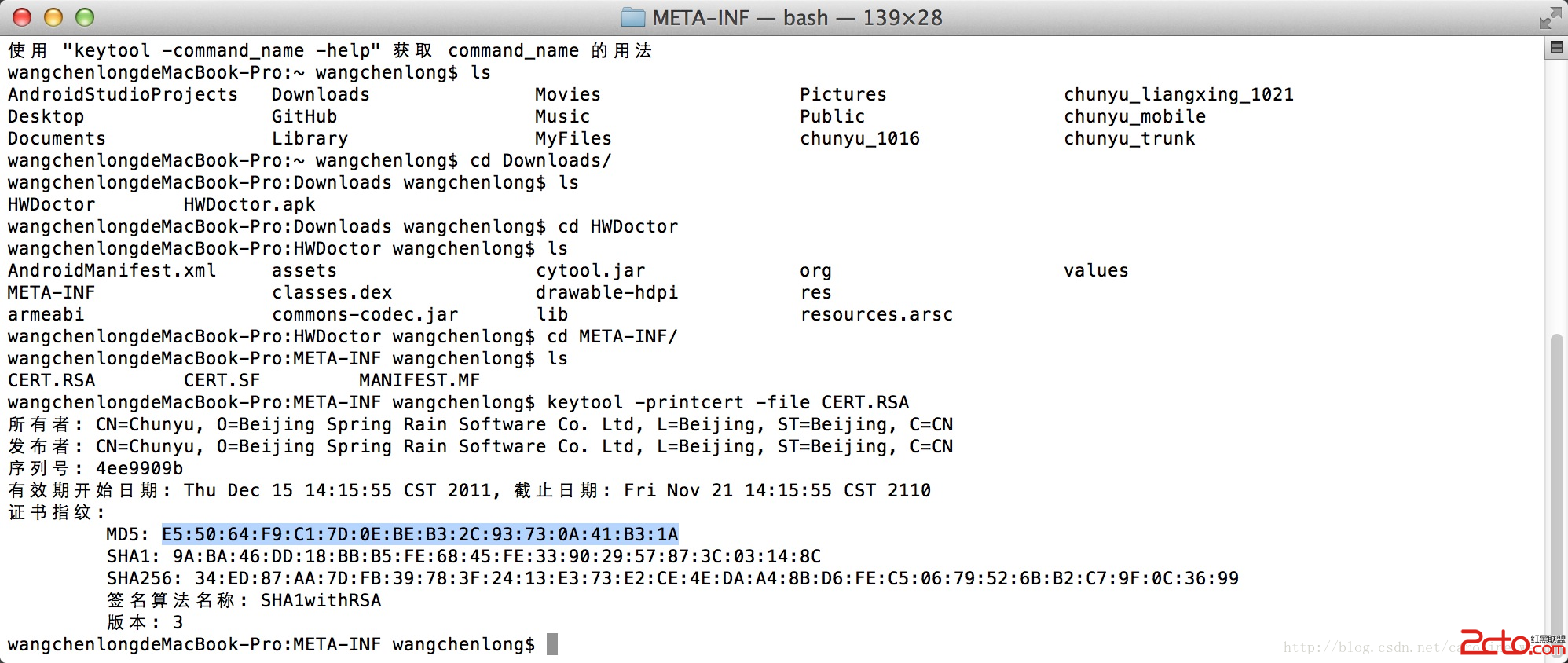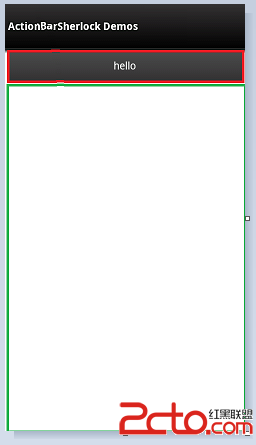編輯:關於Android編程
Base class for code that will receive intents sent by sendBroadcast(). --BroadcastReceiver是夠接收sendBroadcast方法發送的intent的基類。 If you don't need to send broadcasts across applications, consider using this class with LocalBroadcastManager instead of the more general facilities described below. This will give you a much more efficient implementation (no cross-process communication needed) and allow you to avoid thinking about any security issues related to other applications being able to receive or send your broadcasts. --如果你不需要在app間傳遞broadcasts,那麼可以考慮使用LocalBroadcastManager You can either dynamically register an instance of this class with Context.registerReceiver() or statically publish an implementation through thetag in your AndroidManifest.xml. --你可以動態的注冊實例,使用Context.registerReceiver() ,或者靜態的注冊 在AndroidManifest.xml 中使用 的標簽。 Note: If registering a receiver in your Activity.onResume() implementation, you should unregister it in Activity.onPause(). (You won't receive intents when paused, and this will cut down on unnecessary system overhead). Do not unregister in Activity.onSaveInstanceState(), because this won't be called if the user moves back in the history stack. -- 如果在activity 中的onResume方法中注冊了receiver ,那麼就需要在onPause 方法中移除receiver的注冊,(在paused狀態下,你不能接收intent ,這樣可以減少不必要的系統開銷),不要在onSaveInstanceState()方法中移除receiver的注冊,因為在用戶回退到歷史棧中的時候,這個方法不會被調用 There are two major classes of broadcasts that can be received: -- 下面有2個主要的broadcasts的類可以接受intent Normal broadcasts (sent with Context.sendBroadcast) are completely asynchronous. All receivers of the broadcast are run in an undefined order, often at the same time. This is more efficient, but means that receivers cannot use the result or abort APIs included here. -- 普通的broadcasts(調用Context.sendBroadcast)是完全異步的,所有的接收者都是無序的,通常在同一時間(指的接收消息),這是很有效率的,不能使用result 和 終止廣播的api Ordered broadcasts (sent with Context.sendOrderedBroadcast) are delivered to one receiver at a time. As each receiver executes in turn, it can propagate a result to the next receiver, or it can completely abort the broadcast so that it won't be passed to other receivers. The order receivers run in can be controlled with the android:priority attribute of the matching intent-filter; receivers with the same priority will be run in an arbitrary order. -- 有序的broadcasts(調用Context.sendOrderedBroadcast )可以在同一時間只提交一個receiver,每個receiver 依次執行,可以傳遞結果給另一個receiver,也可以終止這個廣播,這樣的話,就不會傳遞給別的receiver,有序的接受者可以通過android:priority 被控制來適配intent-filter,如果他們的優先權的權重一致,那麼他們的運行就是無序的。 Even in the case of normal broadcasts, the system may in some situations revert to delivering the broadcast one receiver at a time. In particular, for receivers that may require the creation of a process, only one will be run at a time to avoid overloading the system with new processes. In this situation, however, the non-ordered semantics hold: these receivers still cannot return results or abort their broadcast. Note that, although the Intent class is used for sending and receiving these broadcasts, the Intent broadcast mechanism here is completely separate from Intents that are used to start Activities with Context.startActivity(). There is no way for a BroadcastReceiver to see or capture Intents used with startActivity(); likewise, when you broadcast an Intent, you will never find or start an Activity. These two operations are semantically very different: starting an Activity with an Intent is a foreground operation that modifies what the user is currently interacting with; broadcasting an Intent is a background operation that the user is not normally aware of. The BroadcastReceiver class (when launched as a component through a manifest's tag) is an important part of an application's overall lifecycle. -- 如果使用了 注冊,那麼receiver的生命周期就是application級的。 Developer Guides For information about how to use this class to receive and resolve intents, read the Intents and Intent Filters developer guide. Security Receivers used with the Context APIs are by their nature a cross-application facility, so you must consider how other applications may be able to abuse your use of them. Some things to consider are: -- receiver 是在app間可以被調用的,可能會造成濫用,所以需要考慮下面的事: The Intent namespace is global. Make sure that Intent action names and other strings are written in a namespace you own, or else you may inadvertently conflict with other applications. When you use registerReceiver(BroadcastReceiver, IntentFilter), any application may send broadcasts to that registered receiver. You can control who can send broadcasts to it through permissions described below. When you publish a receiver in your application's manifest and specify intent-filters for it, any other application can send broadcasts to it regardless of the filters you specify. To prevent others from sending to it, make it unavailable to them with android:exported="false". When you use sendBroadcast(Intent) or related methods, normally any other application can receive these broadcasts. You can control who can receive such broadcasts through permissions described below. Alternatively, starting with ICE_CREAM_SANDWICH, you can also safely restrict the broadcast to a single application with Intent.setPackage None of these issues exist when using LocalBroadcastManager, since intents broadcast it never go outside of the current process. Access permissions can be enforced by either the sender or receiver of a broadcast. To enforce a permission when sending, you supply a non-null permission argument to sendBroadcast(Intent, String) or sendOrderedBroadcast(Intent, String, BroadcastReceiver, android.os.Handler, int, String, Bundle). Only receivers who have been granted this permission (by requesting it with the tag in their AndroidManifest.xml) will be able to receive the broadcast. To enforce a permission when receiving, you supply a non-null permission when registering your receiver -- either when calling registerReceiver(BroadcastReceiver, IntentFilter, String, android.os.Handler) or in the static tag in your AndroidManifest.xml. Only broadcasters who have been granted this permission (by requesting it with the tag in their AndroidManifest.xml) will be able to send an Intent to the receiver. See the Security and Permissions document for more information on permissions and security in general. Receiver Lifecycle A BroadcastReceiver object is only valid for the duration of the call to onReceive(Context, Intent). Once your code returns from this function, the system considers the object to be finished and no longer active. This has important repercussions to what you can do in an onReceive(Context, Intent) implementation: anything that requires asynchronous operation is not available, because you will need to return from the function to handle the asynchronous operation, but at that point the BroadcastReceiver is no longer active and thus the system is free to kill its process before the asynchronous operation completes. In particular, you may not show a dialog or bind to a service from within a BroadcastReceiver. For the former, you should instead use the NotificationManager API. For the latter, you can use Context.startService() to send a command to the service. Process Lifecycle A process that is currently executing a BroadcastReceiver (that is, currently running the code in its onReceive(Context, Intent) method) is considered to be a foreground process and will be kept running by the system except under cases of extreme memory pressure. Once you return from onReceive(), the BroadcastReceiver is no longer active, and its hosting process is only as important as any other application components that are running in it. This is especially important because if that process was only hosting the BroadcastReceiver (a common case for applications that the user has never or not recently interacted with), then upon returning from onReceive() the system will consider its process to be empty and aggressively kill it so that resources are available for other more important processes. This means that for longer-running operations you will often use a Service in conjunction with a BroadcastReceiver to keep the containing process active for the entire time of your operation.
 Android - 查看Android應用(apk)簽名
Android - 查看Android應用(apk)簽名
查看Android應用(apk)簽名 在微博、微信開放平台注冊應用時,需要填寫應用(apk)的簽名,可以使用keytool工具找
 Android自定義圓角ImageView
Android自定義圓角ImageView
廢話不多說了,直接給大家貼代碼了。java類如下: import android.content.Context; import android.content.res.
 Android Touch系統簡介(二):實例詳解onInterceptTouchEvent與onTouchEvent的調用過程
Android Touch系統簡介(二):實例詳解onInterceptTouchEvent與onTouchEvent的調用過程
上一篇文章主要講述了Android的TouchEvent的分發過程,其中有兩個重要的函數:onInterceptTouchEvent和onTouchEvent,這兩個函數
 Android模糊示例-RenderScript-附效果圖與代碼
Android模糊示例-RenderScript-附效果圖與代碼
1. 程序截圖 拖動紅色區域,可以顯示出清晰的汽車部分。拖動下面的滑塊,可以更改模糊程度。 2. 程序實現方法 實現思路,用FrameLayout搞了